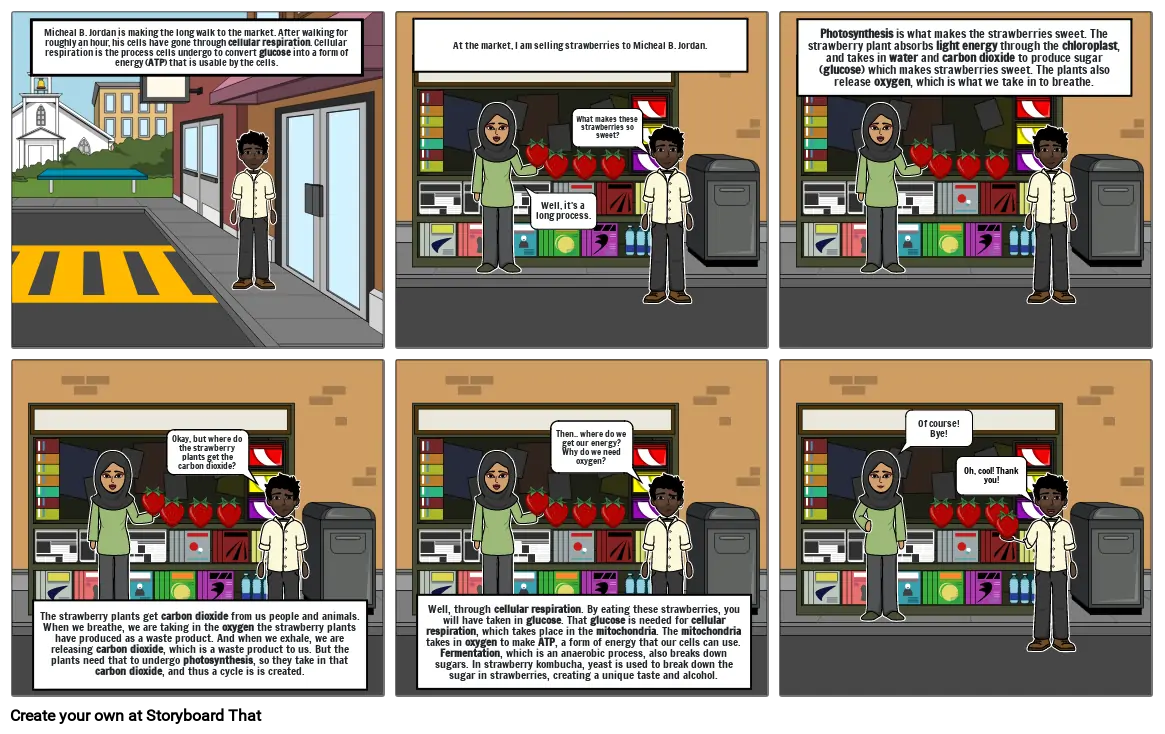Biology Project

Storyboard Text
- Micheal B. Jordan is making the long walk to the market. After walking for roughly an hour, his cells have gone through cellular respiration. Cellular respiration is the process cells undergo to convert glucose into a form of energy (ATP) that is usable by the cells.
- At the market, I am selling strawberries to Micheal B. Jordan.
- Well, it's a long process.
- What makes these strawberries so sweet?
- Photosynthesis is what makes the strawberries sweet. The strawberry plant absorbs light energy through the chloroplast, and takes in water and carbon dioxide to produce sugar (glucose) which makes strawberries sweet. The plants also release oxygen, which is what we take in to breathe.
- The strawberry plants get carbon dioxide from us people and animals. When we breathe, we are taking in the oxygen the strawberry plants have produced as a waste product. And when we exhale, we are releasing carbon dioxide, which is a waste product to us. But the plants need that to undergo photosynthesis, so they take in that carbon dioxide, and thus a cycle is is created.
- Okay, but where do the strawberry plants get the carbon dioxide?
- Well, through cellular respiration. By eating these strawberries, you will have taken in glucose. That glucose is needed for cellular respiration, which takes place in the mitochondria. The mitochondria takes in oxygen to make ATP, a form of energy that our cells can use. Fermentation, which is an anaerobic process, also breaks down sugars. In strawberry kombucha, yeast is used to break down the sugar in strawberries, creating a unique taste and alcohol.
- Then.. where do we get our energy? Why do we need oxygen?
- Of course! Bye!
- Oh, cool! Thank you!
Over 30 Million Storyboards Created

